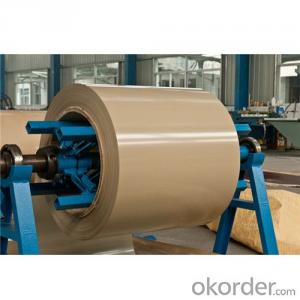When it comes to construction, one of the most critical elements is the reinforcement of concrete structures. This is where reinforced bars, or ‘rebars’ as they are commonly known, come into play. These bars are made from steel and are used to strengthen concrete, making it more durable and resistant to various types of stress. But what exactly are these rebars, and what sizes do they come in? Let’s take a deep dive into the world of rebars and explore their importance, types, and sizes in a more casual and engaging way.
The Backbone of Concrete Structures
Rebars are the backbone of concrete structures. They provide the tensile strength that concrete lacks, making the structure more robust and capable of withstanding the test of time. Imagine a skyscraper without rebars – it would be like building a sandcastle, susceptible to collapse at the slightest provocation. That’s why rebars are an indispensable part of any construction project.
A Brief History of Rebars
Before we delve into the sizes and types, let’s take a quick trip down memory lane. The concept of reinforcing concrete with steel bars dates back to the early 20th century. Since then, rebars have evolved significantly, with advancements in material science and manufacturing techniques. Today, rebars are an integral part of modern construction practices worldwide.
Types of Rebars: A Spectrum of Strength
Rebars come in various types, each with its own unique properties and applications. The most common types include:
– Plain Round Rebars: These are the basic type, used for general reinforcement purposes.
– Deformed Rebars: With their unique pattern of ridges, these bars provide better grip and bond with the concrete.
– Ribbed Rebars: Similar to deformed rebars, these have ribs that enhance the bond with the surrounding concrete.
– Tied Rebars: These are used in specific applications where a bundle of rebars is needed for added strength.
– Epoxy-Coated Rebars: Coated with epoxy to protect against corrosion, these are ideal for environments with high moisture or chemical exposure.
Understanding Rebar Sizes: The Numbers Game
Now, let’s talk about the sizes. Rebar sizes are typically denoted by their diameter, measured in millimeters (mm). The most common sizes range from 6mm to 40mm, with increments of 2mm or 4mm. The size you choose depends on the structural requirements of your project.
– Smaller Rebars (6mm – 12mm): These are used for minor reinforcements in residential construction or for fixing purposes.
– Medium Rebars (16mm – 25mm): The workhorses of the construction world, these are used in a variety of applications, from residential to commercial buildings.
– Larger Rebars (32mm – 40mm): Reserved for heavy-duty applications, these are used in large-scale projects like bridges and high-rise buildings.
The Role of Rebar in Different Structures
Rebars play a crucial role in various types of structures, from residential homes to massive infrastructure projects. Let’s take a look at how they contribute to the strength and stability of different structures:
– Residential Buildings: Rebars ensure the stability of walls, floors, and roofs, providing a safe and secure living environment.
– Commercial Buildings: In commercial spaces, rebars are used to support heavy loads and maintain the structural integrity of the building.
– Infrastructure Projects: Bridges, highways, and dams rely heavily on rebars to withstand the forces of nature and the weight of traffic.
The Art of Rebar Placement and Splicing
Proper placement and splicing of rebars are essential for the optimal performance of reinforced concrete structures. It’s an art that requires precision and skill. The rebars must be positioned correctly within the concrete formwork, and splices must be made with care to ensure a seamless bond with the surrounding concrete.
The Future of Rebars: Innovation and Sustainability
As we look to the future, the role of rebars in construction is only set to grow. With advancements in technology and a focus on sustainability, we can expect to see innovations in rebar manufacturing and application. This includes the development of high-strength rebars, improved corrosion protection, and even the use of recycled materials in rebar production.
Wrapping Up Our Deep Dive
In conclusion, rebars are the unsung heroes of the construction world. They may not be the most glamorous part of a building, but their importance cannot be overstated. By understanding the types, sizes, and applications of rebars, we can appreciate the vital role they play in creating strong, durable, and safe structures. So, the next time you walk past a construction site, take a moment to appreciate the intricate web of rebars that will soon become the backbone of a new building.

